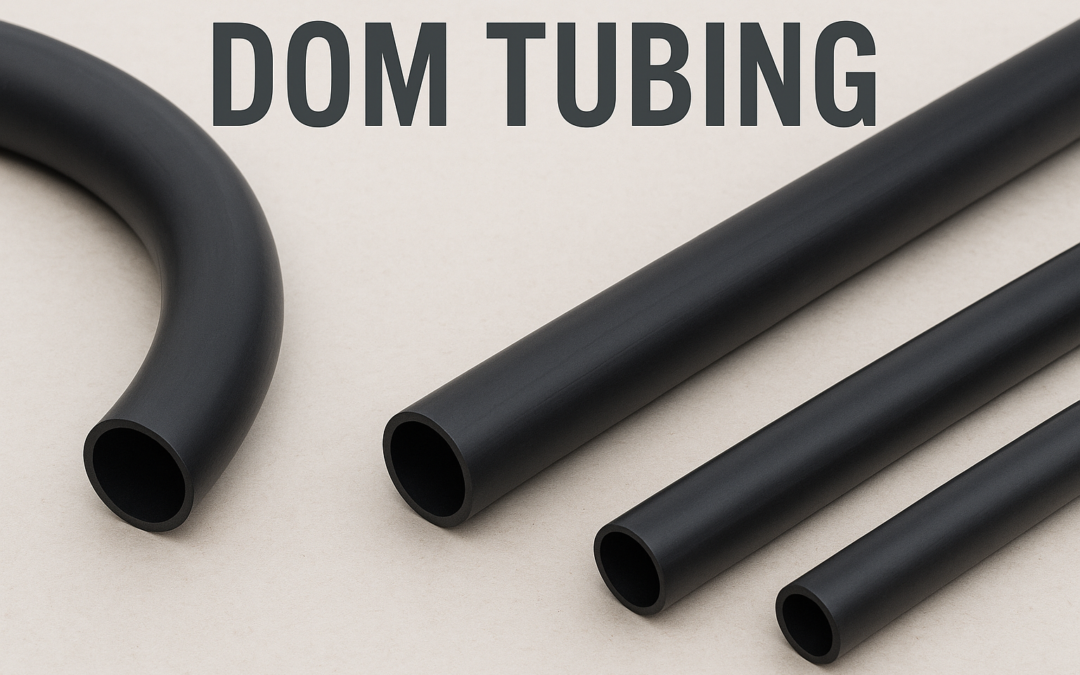What Is DOM Tubing?
Drawn Over Mandrel Mechanical tube (DOM) is a form of cold-drawn tube composed of 1020/1026 electric resistance welded steel. DOM tubing differs from standard electric welded tubing in that all flash is removed during the cold drawing process, resulting in extremely tight outer diameter (OD) and inner diameter (ID) tolerances.
What are the uses of DOM tubing?
DOM tubing is utilized in high-pressure and heavy-duty applications in industries such as automotive, oil & gas, and aerospace. It’s perfect for making durable machine parts including motorcycle frames, mechanical bearings, and hydraulic cylinders.
Dom tubing is made of what grade steel?
DOM tubing is usually made of 1020, 1026, or ST52.3 grade steel. It is a cold-drawn, electric resistance welded tube with all flash removed before drawing, which increases yield and tensile strength.
What is the thickness of Dom tube?
| Outside Diameter | Wall thickness | Inside Diameter | Type | Weight, lbs/ft. | Wgt/80ft. |
| 1.25″ | 0.120 | 1.010″ | HREW/DOM | 1.448 | 116 |
| 1.375″ | 0.120 | 1.135″ | HREW/DOM | 1.608 | 128.6 |
| 1.5″ | 0.095″ | 1.310 | HREW/DOM | 1.426 | 114 |
| 1.5″ | 0.120″ | 1.260″ | HREW/DOM | 1.769 | 141.5 |
| 1.75″ | 0.109″ (FIA) | 1.532″ | DOM | 1.910 | 152.8 |
| 1.75″ | 0.120″ | 1.510″ | HREW/DOM | 2.089 | 167.1 |
What is 1026 DOM tubing?
1026 DOM tubing is a circular tube constructed of 1026 mild steel, which is noted for its superior quality. During the finishing phases, the tube is cold drawn around a mandrel to ensure accurate dimensions and improved mechanical qualities.
What’s the difference between DOM 1020 and 1026?
DOM tubing is available in a variety of grades, including 1020 and 1026. The 1026 grade is typically used for bigger diameters (more than 2″) and thicker walls (greater than.156″), whereas the 1020 grade is appropriate for lower diameters and thinner walls.
Why use DOM tubing?
DOM tubing is chosen for projects needing high pressure or severe workloads because of its better strength and precision when compared to traditional welds. It is widely utilized in heavy-metal sectors such as automotive, oil and gas, and aerospace engineering to manufacture critical and durable machine parts.
Is DOM tubing welded?
Yes, DOM tubing is comprised of electric resistance-welded steel. However, all flash is removed before the tubing is cold pulled, resulting in increased precision and strength.
How is DOM tubing made?
DOM tubing is made by first slitting steel coils to the desired tube size. An electric resistance welder then connects the edges to make the tube. Following welding, the tube is cold drawn to precise dimensions, checked for industry standards, and cut to the desired shape and size.
How to measure DOM tubing?
DOM tubing is measured by its outer diameter (OD) and wall thickness. For example, a 1.75-inch x.120-wall DOM tube has a 1.75-inch outside diameter and a 0.120-inch wall thickness.
What’s the difference between ERW and DOM tubing?
ERW (Electric Resistance Welded) tubing is typically constructed from a 1010 alloy, but DOM (Drawn Over Mandrel) tubing is commonly made from a higher-grade 1026 alloy. DOM tubing is often more expensive and regarded as a premium product than ERW tubing due to its higher strength and precision.
Is DOM steel strong?
Yes, DOM steel is strong. It offers excellent mechanical qualities, including enhanced hardness and tensile strength, as well as a dependable welding seam, making it ideal for demanding applications.
Is DOM tubing more expensive?
DOM tubing is generally more expensive than normal electric resistance welded (ERW) tubing, but less so than cold drawn seamless tube. It provides a greater surface polish and precision, as well as good formability and machinability, at a lower cost than seamless solutions.
What is the ASTM spec for DOM tubing?
DOM (Drawn Over Mandrel) tubing is made in accordance with ASTM Specification A513. This specification assures that DOM tubing has tensile qualities equivalent to cold-drawn seamless steel tube with the same steel analysis and nominal size.
Is DOM stronger than ERW?
DOM tubing is often regarded as a higher-end product than ERW tubing, and it is typically more expensive. While DOM provides a greater surface quality and precision, both DOM and ERW tubing have almost comparable strength qualities, so there may not be a substantial difference in strength for applications such as roll bars or roll cages.
What is the difference between A500 and A513 tubing?
A500 and A513 steel tubes have distinct applications and qualities. A500 is a structural material with high strength and durability, making it ideal for heavy-duty assemblies. A513, on the other hand, has some characteristics to A500 but is less robust and not suitable for structural application.


